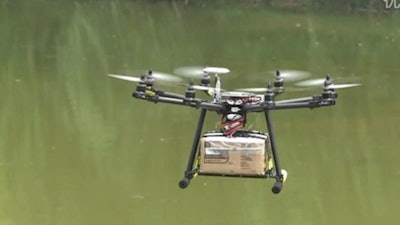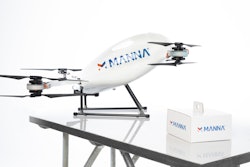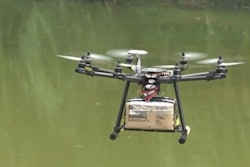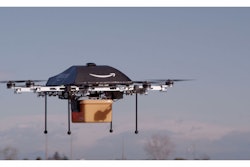
This past weekend’s Wall Street Journal carried an article, “The Delivery Drone Dilemma,” about the future of drones in commercial deliveries. A colorful infographic described the “copter drone” and the “winged drone.”
Those images called to mind an early childhood memory: a 58-cm (23-inch) diameter sphere with four long antennas. The year was 1957, and this small satellite, the Sputnik 1, orbited the earth. That little metal globe with its four radio antennas was smaller than the drones now being tested for commercial deliveries.
Small and simple as the Sputnik 1 was by today’s standards, it sent shock waves through the military and scientific communities, unleashing a wave of scientific research, resulting ultimately in a multi-billion-dollar space program and a moon landing.
The stakes might seem much lower when thinking about commercial package delivery. But consider what’s at stake when the technology arrives. Think of the benefits to consumers and businesses.
The copter drone, which has propellers and looks like a mini helicopter, is 14 feet wide. DHL and Amazon have tested copter drones. These drones usually land to drop off packages.
The winged drone resembles a Stealth fighter and measures 4.9 feet wide. Google has tested lowering packages on a line with these drones.
According to The Wall Street Journal, the biggest challenges facing delivery drones are short battery life and unreliable location data. Developers have not come up with a way to ensure the drones drop packages in the right location. Other challenges include managing drone traffic, controlling accidents and weather issues. Not to mention regulatory issues. Commercial pilots groups, including the Air Line Pilots Association, say sharing air space with drones poses a danger.
The Federal Aviation Administration recently gave Amazon permission to test drones for its Prime Air project.
Recently proposed federal rules call for daytime-only operation. Drones must fly below 500 feet, cannot exceed 100 miles per hour and the unmanned aircraft must remain within the operator's "line of sight."
Drones will require sensors and software that still are not available, although chip makers Intel and Qualcomm claim to be working on it.
Raffaello D’Andrea, a robotics professor at ETH Zurich and an expert on drones, says large-scale drone delivery will take about five years to develop.
Unsolved issues notwithstanding, most of us can expect to see drones play a role in commercial delivery. Several big corporations have invested serious resources in making it happen. When it does, commercial delivery as we know it today will look very different.
I can remember when it took a leap of faith to believe space travel was possible.




















